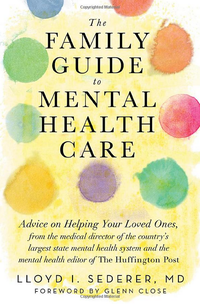
Thrive: Finding the Recipe for a Good Life
Lloyd I. Sederer, M.D.
When I was a medical student, I went to a yoga center to learn to meditate. It was not the kind of tony center that celebrities and urban elite attend for recharging. IT was a modest and decidedly off-beat place where the silence was a bit deafening. I was given my mantra and learned Transcendental Meditation, and have practiced TM and variants of it, on and off, since that time. Once, as a control subject in an EEG study, to earn some money as a poor student, after the experiment was over I asked the technician to record my brain activity when I meditated. In a matter of seconds, I was able to achieve brain electrical patterns of relaxation that wowed the recorder. I guess I had learned to meditate.
In recent years, because of my work with the mental health consequences of disasters (like 9/11 and Super Storm Hurricane Sandy), I also learned about the simple, yet astounding benefits of slow breathing (yogic breathing at five to six breaths/minute with resistance on exhale). Breathing techniques are often coupled with meditation -- but simple breathing techniques alone have been taught in the wake of a disaster to young children and rural villagers who cannot read, and can serve as powerful ways to gain control over psychic and somatic tension, blood pressure, heart rate and racing thoughts.
Fast-forward to this week, in mid-town Manhattan. I joined about 1,000 prosperous-looking people (must have been more than 80 percent women) for an event called Thrive, hosted by Arianna Huffington (my editor-in-chief as the medical editor for mental health at HuffPost) and Mika Brzezinski (Morning Joe and author).
The assembled group at City Center were admittedly distressed, but not there because they had an illness (though some assuredly did, with more than 20 percent of adults annually suffering from a mental disorder, not to mention those who have substance use problems). They were there seeking ways to lead more balanced lives so that their (our) brief moment on earth would not be lost to stress, compulsions and distance from the people and beauty around us.
I was there as media, an (unpaid) editor for The Huffington Post, though I admit I have my share of stress, which I think of as tsurus (heartache in Yiddish). But I do value my time, as Thrive urges, so I went because I thought I would witness an unusual 'happening,' perhaps a harbinger (as Arianna has become) of social and cultural trends I wanted to understand.
Arianna calls the pursuit of a balanced life the "Third Metric." She discovered this dimension after passing out from exhaustion seven years ago, and fracturing her cheek bone and lacerating an area around her eye. Beyond the notable metrics of money and power she realized there is something beyond these metrics (which she had achieved), namely also having a life -- and not face down on her desk. Thrive was born.
The Thrive event featured Arianna's pantheon of musicians, gurus, artists, authors, scientists, corporate titans and family members of the hosts. Conversations were mixed with music and TED-like talks. There was regular mention of people "coming out," not in the conventional way we have learned, but as meditators. At one point, there was a video of some who came out, including George Stephanopoulos, Kenneth Branagh, Ellen DeGeneres and others.
It was 2014, and I found myself at a training event on ancient practices that were becoming mainstream -- and offer the promise of a healthier, longer and more fulfilling life. It seemed that "New Age" was about to lose that often disdainful appellation.
I wondered, as I breathed and took in the music of the Thrive event, if this was a gathering of and techniques for the "1 percent" -- maybe 2 percent? But what about people who are ill with mental and substance-use disorders, not just breathless from corporate or professional life?
Then I realized that, indeed, meditation, yoga, exercise, breathing techniques, nutrition and mindfulness are all very useful ways for everyone to stay well or manage a host of chronic illnesses, not just those in my field. I also realized that a distressed, poor single mother (or others up the socio-economic ladder) really could use a breathing technique waiting for a bus, in circumstances indifferent to their plight or amidst the clamor of everyday life.
Those privileged to be at Thrive will have access, time and money for classes and coaches to thrive. But how can we get these techniques beyond the "1 percent" and into the lives and treatment plans of people with mental conditions that render them more than just stressed? How can we get these techniques broadly into a diverse population that could benefit? Those were the questions -- it seemed to this public health doctor -- not addressed at this event. I hope they will be at the next.
---
 Dr. Sederer's new book for families who have a member with a mental illness is The Family Guide to Mental Health Care (Foreword by Glenn Close).
Dr. Sederer's new book for families who have a member with a mental illness is The Family Guide to Mental Health Care (Foreword by Glenn Close).
Dr. Sederer is a psychiatrist and public health physician. The views expressed here are entirely his own. He takes no support from any pharmaceutical or device company.
www.askdrlloyd.comhttp://www.askdrlloyd.com